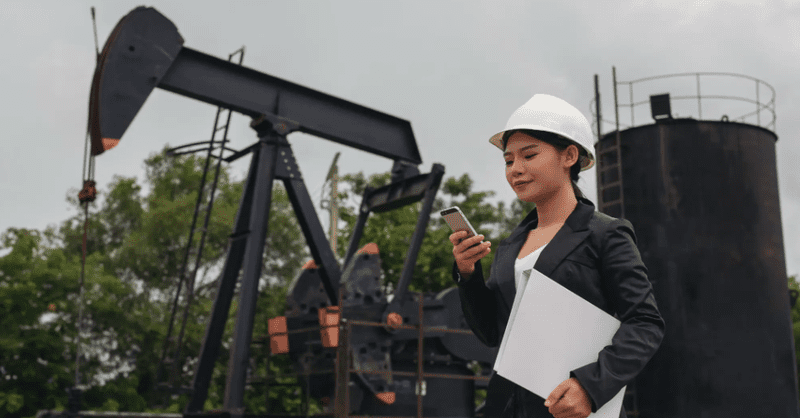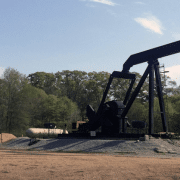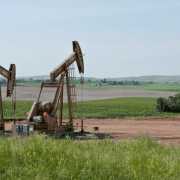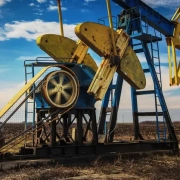⚠️ IMPORTANT LEGAL DISCLAIMER:
The information provided on this page is for general informational purposes only and does not constitute legal, financial, or investment advice. Oil and gas laws, mineral rights regulations, and royalty structures vary significantly by state and jurisdiction. While we strive to provide accurate and up-to-date information, no guarantee is made to that effect, and laws may have changed since publication.
You should consult with a licensed attorney specializing in oil and gas law in your jurisdiction, a qualified financial advisor, or other appropriate professionals before making any decisions based on this material. Neither the author nor the publisher assumes any liability for actions taken in reliance upon the information contained herein.
The oil and gas industry plays a crucial role in powering economies and supporting modern life, but its operations carry significant environmental risks. As exploration and production activities expand into new and sometimes ecologically sensitive areas, the need to mitigate environmental impacts becomes more pressing. Oil and gas leasing—an essential component of energy development—involves granting rights to explore, drill, and extract hydrocarbons on public or private lands. However, this process must be managed carefully to protect ecosystems, public health, and long-term sustainability. Let’s talk more about Mitigating Environmental Risks.
This article explores the various environmental risks associated with oil and gas leasing and outlines best practices and strategies to mitigate those risks. From legal frameworks and regulatory oversight to technological innovations and community engagement, understanding the full landscape of environmental risk mitigation is essential for responsible energy development.
Understanding the Environmental Footprint of Oil and Gas Operations
Oil and gas operations involve a series of activities that can significantly affect the environment. These include land clearing, road construction, seismic surveys, drilling, well completion, production, and eventual site reclamation. Each phase poses distinct risks, such as habitat destruction, water contamination, air pollution, and greenhouse gas emissions.
The environmental footprint can vary depending on the location, geological conditions, type of resource, and the methods used. For example, offshore drilling presents different risks compared to onshore shale development. Likewise, conventional vertical drilling differs in impact from hydraulic fracturing and horizontal drilling techniques.
Regulatory Framework Governing Oil and Gas Leasing
Environmental protection in oil and gas leasing is guided by a combination of federal, state, and local regulations. On federal lands, agencies such as the Bureau of Land Management and the Bureau of Ocean Energy Management oversee leasing processes and enforce environmental compliance. Key legislation includes the National Environmental Policy Act, the Clean Water Act, the Clean Air Act, and the Endangered Species Act.
Under the National Environmental Policy Act, proposed leasing actions must undergo environmental assessments or more comprehensive environmental impact statements. These evaluations identify potential impacts and propose mitigation measures before leasing decisions are finalized. At the state level, agencies often supplement federal oversight with additional permitting and monitoring requirements.
Site Selection and Environmental Planning
The first step in mitigating environmental risks is careful site selection and planning. Identifying suitable locations that minimize ecological disruption is essential. Geographic information systems, remote sensing data, and environmental impact models can be used to assess terrain, vegetation, wildlife habitats, and proximity to sensitive ecosystems or communities.
Exclusion zones are often established to protect wetlands, critical habitats, drinking water sources, and culturally significant areas. Strategic planning also involves designing infrastructure layouts that reduce surface disturbance, such as using existing roads and minimizing the number of drilling pads.
Implementing Best Practices in Drilling and Production
The adoption of best management practices (BMPs) in drilling and production operations is a key component of environmental risk mitigation. These practices aim to reduce the impact on land, water, and air resources while enhancing safety and efficiency.
For instance, closed-loop drilling systems eliminate the need for open pits, thereby reducing the risk of soil and groundwater contamination. Proper casing and cementing techniques are critical for isolating the wellbore from surrounding formations and preventing fluid migration. Spill prevention measures, such as secondary containment systems and automatic shutoff valves, are also essential.
During production, routine monitoring of air emissions, noise levels, and water usage helps maintain compliance and identifies opportunities for improvement. Flaring and venting should be minimized through gas capture technologies and equipment maintenance to reduce methane emissions and improve air quality.
Water Resource Protection Strategies
Water management is one of the most critical environmental challenges in oil and gas leasing. Drilling and hydraulic fracturing require large volumes of water, and improper handling of wastewater can lead to contamination of surface and groundwater sources.
To mitigate these risks, operators must develop comprehensive water management plans. These include sourcing water sustainably, treating and reusing flowback and produced water, and safely disposing of waste fluids through injection wells or advanced treatment technologies. Monitoring wells and conducting baseline water quality testing before and after operations can provide early warnings of contamination.
Buffer zones and protective barriers around water bodies further safeguard against spills and runoff. Where feasible, the use of non-potable water or brackish water for operations helps conserve freshwater resources.
Air Quality Management and Emission Reduction
Air emissions from oil and gas operations can affect local air quality and contribute to climate change. Key pollutants include volatile organic compounds, nitrogen oxides, sulfur dioxide, particulate matter, and methane—a potent greenhouse gas.
Operators can mitigate air emissions through a combination of engineering controls, operational practices, and monitoring systems. Vapor recovery units, leak detection and repair programs, and low-emission equipment are effective tools. Electrifying equipment and using cleaner fuels for on-site power generation also reduce emissions.
Regulatory programs such as the Environmental Protection Agency’s New Source Performance Standards set limits on emissions and require regular reporting. Adherence to these standards, combined with voluntary initiatives like carbon offset programs, can significantly reduce the environmental footprint.
Habitat and Biodiversity Conservation
Oil and gas leasing can lead to habitat fragmentation and loss, posing risks to wildlife and biodiversity. Mitigation efforts must prioritize habitat conservation and ecosystem health throughout the lifecycle of a project.
This begins with pre-development surveys to identify the presence of endangered or sensitive species. Based on survey results, developers may relocate infrastructure, adjust operations to avoid breeding seasons, or establish conservation offsets. Restoration and revegetation of disturbed areas post-operations help return the land to its natural state.
Collaborating with wildlife agencies, academic institutions, and conservation organizations can yield innovative solutions and enhance environmental stewardship. Biodiversity management plans that are tailored to regional ecosystems are increasingly being adopted as standard practice.
Community Engagement and Social Responsibility
Engaging with local communities and stakeholders is a vital part of environmental risk mitigation. Community concerns often focus on health impacts, water safety, noise, traffic, and property values. Transparent communication and inclusive decision-making build trust and foster collaborative solutions.
Companies should conduct public meetings, share environmental assessment results, and provide opportunities for feedback. Community benefit agreements, investment in local infrastructure, and support for education and training programs can enhance social license to operate.
Grievance mechanisms and regular reporting on environmental performance ensure accountability and continuous improvement. Proactive community engagement can also lead to better project outcomes and reduced opposition.
Emergency Preparedness and Spill Response
Despite best efforts, environmental incidents can still occur. Therefore, comprehensive emergency preparedness and spill response plans are critical. These plans should include risk assessments, response procedures, personnel training, and coordination with local emergency services.
Equipment such as spill kits, containment booms, and mobile response units must be readily available. Real-time monitoring systems can detect leaks and initiate automated shutdowns. Drills and simulations help ensure readiness and identify areas for improvement.
Effective response reduces the impact of incidents on the environment and community, while demonstrating a commitment to responsible operations.
Reclamation and Site Closure Practices
At the end of a well’s productive life, proper site closure and land reclamation are essential to restore the environment and prevent long-term degradation. Reclamation involves removing infrastructure, recontouring the land, replacing topsoil, and replanting native vegetation.
Monitoring of reclaimed sites ensures that vegetation establishes successfully and that erosion or contamination does not occur. Regulatory agencies may require bonding or financial assurance to cover the costs of reclamation and ensure that operators fulfill their obligations.
Incorporating end-of-life planning from the beginning of a project can streamline reclamation and minimize residual environmental risks.
Innovation and Technological Advancements
Ongoing innovation in the oil and gas industry is driving new ways to mitigate environmental risks. From artificial intelligence and machine learning for predictive maintenance to advanced sensors for real-time environmental monitoring, technology is enhancing operational efficiency and environmental performance.
Blockchain is being explored for supply chain transparency and emissions tracking, while drones and robotics enable safer, more precise inspections. Waterless fracking techniques and biodegradable drilling fluids represent further progress in reducing environmental impact.
Investing in research and development, along with collaboration across industry sectors, academia, and government, is key to continuing this momentum.
Mitigating environmental risks in oil and gas leasing is not only a regulatory necessity but also a moral and strategic imperative. As society demands greater environmental accountability, energy companies must rise to the challenge with innovative practices, strong governance, and meaningful engagement.
By integrating environmental considerations into every stage of leasing and operations—from site selection to reclamation—operators can minimize harm, ensure compliance, and build public trust. In doing so, the industry can continue to provide energy resources while protecting the planet for future generations.
Ultimately, responsible leasing practices create a foundation for sustainable development, balancing energy needs with environmental stewardship. With the right frameworks and commitments in place, the oil and gas sector can lead the way in demonstrating that economic growth and environmental protection are not mutually exclusive goals.
Do you have any questions related to Mitigating Environmental Risks? Feel free to contact us here.








